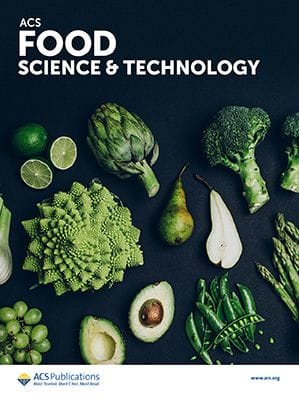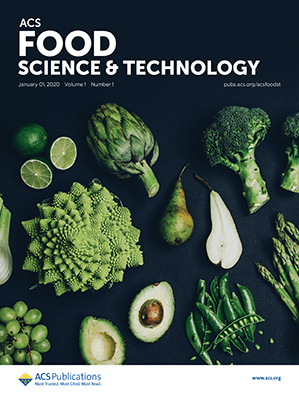Researchers have developed a novel form of chocolate fortified with pre- and probiotics, resulting in a tasty treat with added health benefits.

Chocolate, in its purest form, is a plant-based product rich in antioxidants, fiber, and other essential nutrients—but modern recipes have been become bloated with sugar and additional fats, taking a commercial bar of chocolate a long way from the original cocoa bean. The number of people living with obesity has also dramatically changed, more than tripling since 1975,1 and it is no coincidence that this has happened in conjunction with ultra-processed and packaged foods becoming the norm.
But there is a new shift slowly happening, with more people becoming mindful of the impact of their dietary choices and actively choosing foods that both satisfy hunger and improve health. This has led to the development of functional foods2—novel food products often formulated to contain prebiotics, probiotics, or combinations of both, known as synbiotics. The rising demand for functional foods is transforming the food industry, allowing the growth of techniques such as micro- and nanoencapsulation to protect and preserve these gut-healthy ingredients.3
We already know that probiotics, such as those found in yogurt or kombucha, are good for us, and prebiotics act as fuel to help probiotics grow and thrive in the gut. Synbiotics offer the best of both worlds: they can produce short-chain fatty acids, improve the composition of your gut microbiome, and strengthen your intestinal barrier function. Synbiotics have also been shown to reduce inflammation, enhance nutrient absorption, and support overall gastrointestinal health.4
All of these benefits sound great, especially if they can be delivered in something that looks and tastes delicious. Enter chocolate, a universally loved treat and an ideal candidate that can function as a natural matrix to encapsulate and protect probiotic strains. Researchers recently set out to develop a novel form of synbiotic chocolate using key ingredients from standard chocolate, two Lactobacillus species as a probiotic source, and natural prebiotics and flavoring agents such as corn, honey, cinnamon, and orange.5 They prepared the core ingredients in accordance with standard chocolate preparation techniques, with the prebiotics and flavoring agents incorporated during the tempering process and the probiotics added in a sterile step after cooling.

Novel Formulations of Cinnamon- and Orange-Flavored Synbiotic Corn Chocolates with Enhanced Functional Properties and Probiotic Survival Rates
DOI: 10.1021/acsfoodscitech.4c00741
The team evaluated the resulting synbiotic chocolates for their moisture, pH, protein, fat, antioxidant, flavonoid, and phenolic content. The results, reported in ACS Food Science & Technology, showed enhanced probiotic viability in simulated gastrointestinal conditions, and the products were able to maintain cell counts for up to 125 days under storage. The fat content of the synbiotic chocolate was similar to normal commercial chocolate at around 30%—so while this might count as a functional food with some direct health benefits, it still isn’t a "diet" food in terms of caloric intake. Even so, fat is an essential component of chocolate, influencing texture, mouthfeel, meltability, and overall sensory enjoyment.
And speaking of enjoyment, the authors reported in a recent press release that the orange-flavored chocolates were a team favorite, with vibrant citrusy notes and a slightly softer, more luxurious texture. They aim to continue exploring the health benefits of synbiotic chocolates and improve upon their recipes to create even healthier and more enjoyable treats.
Further Explorations: Probiotics
Improving the microbiome is a core health goal in its own right. Gut dysbiosis has been shown to be correlated with poor health, and contributes to the deterioration of illnesses such as chronic kidney disease (CKD). Probiotics could be used to modulate the gut microbiota and gut-derived metabolites to help alleviate CKD progression, as well as in inflammatory bowel diseases such as ulcerative colitis (UC).6
Work from a team in China recently looked at using probiotics from waste apple trees to promote colonic health in people with UC.7 Commercial orchards thin and discard a huge number of young apple fruits every year, creating a massive volume of biowaste. But there are ten times more polyphenols in young apples than ripe ones, and they are also rich in flavonoids and other biologically active compounds. When combined with the Eurotium cristatum probiotic fungus, these discarded apples have been shown to produce a potent, food-based anti-inflammatory prebiotic that could have the potential to relieve inflammatory disease.
To catch up on even more probiotics research, check out some of the latest articles published in this topic area across the entire ACS Publications journal portfolio.
References
- Prevalence of Obesity. World Obesity Federation 2022. https://www.worldobesity.org.
- Fernandes, S. S. et al. Bioactive Compounds as Ingredients of Functional Foods: Polyphenols, Carotenoids, Peptides from Animal and Plant Sources New. In Bioactive compounds; Woodhead Publishing, Elsevier, 2019; pp 129–142.
- Gutiérrez-Álzate, K. et al. Micro- and Nanoencapsulation of Probiotics: Exploring Their Impact on Animal-Origin Foods. ACS Food Sci. Technol. 2024, 4, 12, 2799–2812.
- Chaturvedi, S.; Chakraborty, S. Introduction to Synbiotics. In Synbiotic Foods: Significance, Applications, and Acceptance, 1 ed.; CRC Press, Taylor and Francis, 2024; pp 1– 16.
- Singh, S.; Gaur, S. Novel Formulations of Cinnamon- and Orange-Flavored Synbiotic Corn Chocolates with Enhanced Functional Properties and Probiotic Survival Rates. ACS Food Sci. Technol. 2025, Article ASAP.
- Huang H.-W.; Chen, M.-J. Exploring the Preventive and Therapeutic Mechanisms of Probiotics in Chronic Kidney Disease through the Gut–Kidney Axis. J. Agric. Food Chem. 2024, 72, 15, 8347–8364.
- Song, W. et al. Characterization of Eurotium cristatum Fermented Thinned Young Apple and Mechanisms Underlying Its Alleviating Impacts on Experimental Colitis. J. Agric. Food Chem. 2024, 72, 29, 16221–16236.
